Crew 296 Journalist – Alba Sánchez Montalvo
SOL 10 started calmly since there was no EVA planned. Everyone could sleep enough to recover their energy and face the last sols to come. During the morning, the last crew members recorded their videos about their experiments at the MDRS for our social media and our collaborations. Again, our non-acting skills shone brighter than us, but we managed to have decent videos.
Loriane cooked meatballs with mashed potatoes for lunch, joining Imane in doing magic when cooking with lyophilized food. Right after, Maxime and Romain went on an EVA to explore and look for fossils. Under the hot sun, they climbed West Ridge and discovered that the ‘rocks’ they were walking on were actually fossilized shells! They collected some and then they could also find some fossilized wood. After that, they returned to the station and shared their discoveries with the rest of the team.
To conclude the sol, the team worked on the daily reports and prepared dinner before playing their new addiction: ‘undercover’. We will go to bed soon since tomorrow will be a busy sol!
End-mission Research Report – April 12th
[category science-report]
Living on Mars
Experiments
Regarding the advancement of everybody’s experiment, here is a quick summary:
Biomedical team (Alba, Arnaud, Imane, Loriane):
Up to today, the biomedical team has collected all the blood serum and saliva samples planned for the mission. The TAP micro device and the HemoCue worked very well. Concerning the salivary tests to study aMMP-8 using the ORALyzer, all of the tests planned are done and if compared to the values prior to the mission, there are reduced levels for the majority of the crew members. However, it’s too early to draw any conclusions; results will be fully analyzed once back in the lab in Belgium when the rest of the measurements in the samples will be performed. Additionally, we’ve gathered physiological data using the Oura ring, which tracks sleep quality and quantity, heart rate, heart rate variability, oxygen saturation, and body temperature. To ensure impartiality, we’ll analyze this data after the experiment concludes. We’ve also collected fecal samples and conducted 12-hour urine collections from all crew members, before and during the simulation and will collect a last one once back in Belgium. Furthermore, subjective sleep quality and stress levels were assessed through questionnaires (Perceived Stress Scale-4 and -10 items, Epworth Sleepiness Scale, and PROMIS sleep disturbance) to further examine the relationship between physiological and behavioral measures. A self-assessment questionnaire assessing mood states and their fluctuations (POMS-f) was also administered at the beginning and the end of the simulation to assess these emotions over the experience. The questionnaire will be analyzed by our psychologist to know whether the effects of confinement (confined space and cut-off social networks) had an impact on mood states of the crew members. Finally, prior to the mission, the crew members completed the Golden Personality Profiler, and to date, the characteristics of their personality profiles have been discussed with the group psychologist and received personalized consultation. These results will help determine whether it is possible to predict the mood states experienced (using the POMS-F) during the group confinement.
Maxime:
Maxime’s experiment to understand the movement of dust in the Martian atmosphere is a success, despite having suffered some setbacks. The station, nicknamed “Dusty,” was composed of a tripod and three sensitive trap cameras, and a Vantage Vue Weather station was installed on Sol 2 but did not transmit because of low battery and the wind indicator was broken. On the morning of Sol 3, a maintenance EVA was done to fix the station and change the battery, and it has been successfully transmitting precious data ever since. The current windy weather is perfect for the experiment as we can see from the hab that some dust is being picked up by the wind in the area of the Dusty Station. We are monitoring its status from the Hab; the sturdy metal tripod looks like it is enduring the harsh weather conditions; a recent EVA revealed the wind indicator was damaged again, it was quickly fixed. A quick check of the cameras showed that the station indeed recorded some dust activity, that means the experiment was very successful.The station transmitted data for 10 Sols, and was recovered after the end of the simulation on Sol 12.
Hippolyte:
Hippolyte’s experiment examines crew interactions with an artificial intelligence (AI) system to support decision-making and task execution. By capturing verbal communications with the AI in individual sessions, the goal is to assess the effectiveness of human-AI dialogue and aim to improve this communication. Hippolyte intends to broaden this investigation by incorporating AI interaction tests during Extravehicular Activities (EVAs), aiming to enrich the dataset with varied results that reflect different operational contexts. All the collection of data went smoothly. There was no problem with the AI and it was promptly accepted by the crew as the data collection went on. The results will be examined once back to Earth and in Belgium.
Louis:
Louis’s experiment aims to explore how UAV technology can enhance future crew efficiency in Martian exploration by mapping the planet’s landscape using drones and automatic flights. In the initial phase, Louis focused on trial and error, dedicating three EVAs to his experiment. His efforts began with familiarizing himself with flying a drone in a spacesuit, followed by executing his first automatic flight to capture images of a specific area, validating the feasibility of automated flights. With the successful completion of the initial automatic flight, Louis shifted his focus to more complex landscapes and experimented with various flight parameters. Despite a first non conclusive flight, all the others were a success. He then shifted his attention to processing the data acquired during these flights to identify potential enhancements for the next phase of the experiment, a second and precise data collection.
With refined data by optimizing the fight parameters and putting Ground Control Points (GCP) into the mapping process, Louis enhanced the different 3D models produced by the software. This last step corresponds to a major success for Louis’ experiment.
Romain:
Romain’s data collection for his experiment went smoothly. Those collections, which happened on Sol 1, 4, 8 and 12 for the drone and the TapStrap, a device constituted of 5 rings that you wear on the basis of your fingers to communicate and send messages by moving your hand, occurred with no trouble whatsoever despite the quick winds on Sol 4. All the data from these experiments will be analyzed once we go back to Earth with the help of fellow scientists and university professors. I also have been working on a scientific letter trying to verify the veracity and precision of data we have from the black hole in the middle of our Milky Way, SrgA*. I am going to determine if the approximation of a Schwartzsheild Black hole is precise enough or if we shouldn’t do that approximation and consider it as a Kerr Black hole.
Sol Summary – April 12th
Sol 12
Summary Title: The last dance
Author’s name: Loriane Baes
Mission Status: 100%
Sol Activity Summary:
Sol 12 began and the Atlas mission came to an end. After one final morning EVA for Romain’s drone experiment, the crew gathered to do a live broadcast with a major Spanish television channel. During this exchange, Alba had the opportunity to explain the entire mission. At the end of the live broadcast, the crew crossed the entrance door together to immortalize the end of the simulation. An emotional moment where everyone applauded in recognition of the journey undertaken. Without delay, the biomedical team then took the crew car to drop the samples in Grand Junction for their shipment to Belgium. Meanwhile, the rest of the team conducted a second live broadcast with the Mars Society Belgium to explain the experiments conducted. The rest of the day was dedicated to the final cleanup and various reports while waiting for the biomedical team to return, followed by a group aperitif in nostalgia for this unique experience that has touched everyone’s lives. The end of a long journey has arrived today, but our exploration of space is only just beginning.
Look Ahead Plan: Tidying up and returning to solid ground.
Anomalies in work: /
Weather: The sun was shining for our last day.
Crew Physical Status: Good.
EVA# 17: The group went to Marble Ritual, where they conducted Romain’s experiment for the last time. Everyone now manages to pilot the drone successfully.
Reports to be filed: Sol Summary, Journalist’s Report, Greenhab Report, Operations Report, Photos (6-8 pics), EVA Report, Astronomy Report, End-mission research report, Mission summary, Food inventory, MDRS checkout .
Support Requested: NA
Operations Report – April 12th
Crew 296 Operations Report 12-04-2024
SOL: 12
Name of person filing report: Louis Joseph
Non-nominal systems: Suit 5 (ventilation electrical connection), Suit 2 (stuck valve) and Suit 9 (broken visor)
Notes on non-nominal systems: No work was done on non-nominal systems today
ROVERS
Spirit rover used:
Hours: 250.8
Beginning charge: 100
Ending charge: 87
Currently charging: No
Opportunity rover used:
Hours: 178.1
Beginning charge: 100
Ending charge: 89
Currently charging: No
Curiosity rover used:
Hours: 276.9
Beginning charge: 100%
Ending charge: 87%
Currently charging: No
Perseverance rover used:
Hours: 290.1
Beginning charge: 80
Ending charge: 67
Currently charging: No
General notes on rovers: NA
Summary of Hab operations:
WATER USE: Cannot be measured as water has been added to the tank
Water (static tank): 360.5 gallons
Static tank pipe heater (on or off): off
Static tank heater (On or off): off
Toilet tank emptied: yes
Summary of internet: Used for music playing, mails, research for experiments, learning languages, live connection with a Spanish TV
Summary of suits and radios:
Radios 1,2,3,4, 5 and 8 were used.
Light Suits 1,3, 4, 6 and 8 were used.
Summary of GreenHab operations: On my last day, every corner of the greenhab was filled with water and memories. See you in another life tomatoes
WATER USE: 9.5 gallons
Heater: On
Supplemental light: N/A
Harvest: None
Summary of ScienceDome operations:
Medical samples were packed for transportation to Grand Junction
Dual split: Off
Summary of RAM operations: (Tools used, work done) Used to dismantle Maxime’s weather station’s metal pole
Summary of any observatory issues: NA
GreenHab Report – April 12th
Crew 296 GreenHab Report 12-04-2024
GreenHab Officer: Hippolyte Hilgers
Environmental control:
Heater on (setup temperature = 75°F)
Fan on (to keep temperature below 94°F)
Average temperatures: 79.9°F
Hours of supplemental light: N/A
Daily water usage for crops: 9.5 gallons
Daily water usage for research and/or other purposes: 0 gallons
Water in Blue Tank (200 gallon capacity): 91.5 gallons
Time(s) of watering for crops: 6:30 PM
Changes to crops: None
Narrative: On my last day, every corner of the greenhab was filled with water and memories. See you in another life tomatoes
Harvest: None
Support/supplies needed: None
EVA Report – April 12th
EVA #17
Author: Arnaud de Wergifosse (Scientist)
Purpose of EVA: This EVA will be focused on Romain Maddox’s experiment. On Sol 1, he took the baseline for his experiment, this time, he will do the fourth data collection with the rest of the team. The 5 last crew members will continue the experiment by controlling a drone (Parrot Anafi) and doing 8 maneuvers with an estimate of 7 minutes per flight and per person and the same place that they did last time, Marble Ritual. Crew members will stay in a radius of about 60m around the rover. They should only go at around 20 meters but as we experienced last time, if the drone has a malfunction and crashes, we might need the 60 meter radius. Anyway, we will contact the Main Hab before exceeding 20 meters.
Start time: 8:30am
End time:
Narrative: As usual, we got ready for an EVA. But it wasnt a usual one. It was the last one that marked the end of our mission here on Mars. Once we got out, we enjoyed the view, took the rovers and drove to Marble Ritual. It was so commun but so special this time. It was like time was going a bit slower. We arrived at the location and performed the last 4 flights. Everything was nominal. We drove back to what was our home for the last two months and entered the sas for the last time. During the decompression we glanced a last time to this red surface, this land of dream hoping the adventure wasnt finished. But the opening of the inside door broke that hope. Thank you Mars for all you gave us but it is time to go back to the mother of all life, Mother Earth.
Destination: Marble Ritual
Coordinates (use UTM WGS 84): 4251000 518750
Participants: Romain Maddox (Commander), Hippolyte Hilgers (Green Hab Officer), Lorraine Baes (Executive Officer), Maxime Foucart (Astronomer) and Louis Joseph (Engineer
Road(s) and routes per MDRS Map: Cow Dung Road 0110
Mode of travel: Driving 3 rovers (Opportunity, Perseverance and Spirit) and walking.
Astronomy Report – April 12th
[category
astronomy-report]
Name: Foucart
Crew: 296
Date: 120424
MDRS ROBOTIC OBSERVATORY
Robotic Telescope Requested (choose one) None
Objects to be Imaged this Evening: None
Images submitted with this report: M104_240412, M51_240412. I wanted to process the RGB but I did not have time today, I will try to process them after.
Problems Encountered: None today, but as I did not have a lot of time to use the robotic observatory, could I have more credits to image more objects later ? I made a request on the website.
MUSK OBSERVATORY
Solar Features Observed: None
Images submitted with this report: None
Problems Encountered: None
Mission Summary – April 12th
Mission summary Crew 296
Author : Loriane Baes
3, 2, 1… “Atlas mission Is back! It was a complete success!”
Crew 296 landed on the surface of Mars at midnight Earth time on March 31, 2024 and the mission ended on April 12, 2024. Twelve sols elapsed during which we took Mars as our habitat.
We quickly familiarized ourselves with our new home and, after a good night’s sleep, immediately started work on our experiments and spacewalks. The first two days were very busy, with report writing, spacewalks, the start of experiments, tasks to be accomplished in the MDRS, adapting to lyophilized food, all facets of accommodating to the new lifestyle required on Mars. Moreover, the next three days, as the first two, were also very busy, but we managed our tasks better to take time to enjoy the fact that we’re on Mars, the beautiful scenery and each other’s presence with team-building activities, card games and cooking together.
The days were punctuated by EVAs where Romain’s experiment involved determining the required frequencies to use a new digital system, Louis’ experiment involved 3D mapping of the terrain using drones, and Maxime’s weather station studied the movements of dust in the simulation, comparing them to Mars data. When the team wasn’t on EVA, Hippolyte took the opportunity to conduct his experiment on the implementation and interfacing of an intelligent voice assistant. The biomedical team also had a busy schedule with saliva, blood, urine, and stool samples, supplemented by self-questionnaires assessing sleep and stress. The goal was to evaluate the impact of LH supplementation on stress associated with confinement and sleep disturbances. The agenda was full, but as the crew likes to say, "science first."
Apart from scientific experiments, life on Mars involves a number of responsibilities. As the station’s engineer, Louis never failed in his duties: emptying toilets, calculating water and repairing various mechanical problems. As much as we appreciated his work and the security he provided, it was always a real challenge for the team to discuss with him the possibility of taking a shower, ruining all his water predictions. Hippolyte also did his duty by pampering the GreenHab all day long, allowing us to add great flavors to each of our dishes. Maxime, the crew’s astronomer, spent most of his time in the observatory, capturing spectacular images of the sun and sky. He even shared his passion with us by helping us observe a solar eclipse. Imane, Crew Safety, never failed to get a message across when someone had a sore back on the way back from EVA, and was always ready to help listening to our each and every little whining. The whole simulation would not have been so immortalized without Alba’s daily photos and videos. Despite the amount of work involved in her job as journalist, Alba always rose to the occasion. Arnaud, as Crew Scientist, proved to be a central pillar of respect for the various studies. SciencesDom became his second home, where he spent a lot of time preparing samples for the biomedical team. The team would not have been complete without Romain and Loriane, who were both in charge of the crew, ensuring that commitments were respected, as well as the team’s benevolence and cohesion.
As part of Loriane’s psychological experiment to study grouped confinement and, more specifically, the stress dimension, the team cut off all social networks and contact with loved ones. The team therefore had to demonstrate their autonomy and creativity, by proposing various playful team-building activities. In the afternoons, some of the team liked to meet up at the Science Dome for their sports session. Despite the limited space, we had no shortage of creative ways to let off steam. We also enjoyed the evening events. We try to innovate each evening with a new and stimulating activity. Card games, board games, mime games, personality tests, general knowledge tests and even a light painting session. The crew were able to take advantage of special moments to get closer to each other, creating real group cohesion.
The days were also punctuated by end-of-day meetings. We usually hold a meeting before dinner to plan the next day, review the simulation and experiences, and discuss how everyone was feeling. For us, the meetings are a privileged moment when we all get together and everyone is free to express themselves in a friendly atmosphere.
We weren’t expecting it, but we enjoyed the lyophilized food. It has to be said that we have some excellent cooks on the team. Loriane and Imane have become the chefs in the kitchen, creating varied, delicious meals every day that we’d never have imagined with this type of food. At the end of each meal, Imane would always prepare a sweet dessert with so few ingredients. She’s a real magician.
Time was also devoted to making videos. We’re keen to share our experience, so we’ve produced videos for several of our collaborators to share on their networks. The content of these videos explains the station, the way of life on Mars and our experiences. We also produced two live broadcasts at the end of the simulation with a major Spanish TV channel and the Mars Society Belgium. These exchanges allow us to share our passion for space exploration and attract the curiosity of some. We’ve also made videos for our aftermovie, so that when we watch them, we’ll be able to recapture the magic of the experience.
We’re leaving Mars on April 12 with lots of memories. We’re all very grateful to have had the chance to discover Mars and its complexity. We’ve all learned a lot from our scientific experiments as well as about ourselves. For some of us, it’s a first step towards our dream of one day becoming astronauts. This experience on Mars has been an important milestone in our journey, and we take with us unforgettable memories and valuable lessons.
Crew Photos – April 11th
Sol Summary – April 11th
Sol 11
Summary Title: Not ready to leave Mars
Author’s name: Alba Sánchez Montalvo
Mission Status: 99% complete
Sol Activity Summary:
SOL 11 started with an EVA for the biomedical team performing Romain’s experiment manipulating the drone. Everything went well until the drone unexpectedly started to convulse in the middle of one of the maneuvers, but our team reacted fast and could save its life. Back at the station, we spent some time together, and again, we tried to convince Louis to allow us to have a fast body-shower since the simulation is almost done and our water consumption is sustainable. After lunch, the biomedical team concluded their sampling plan at the station, collecting the last blood and saliva and performing the last inflammatory cell count in blood. In the afternoon, there was a second EVA for Louis’ experiment and a little bit of exploration, in which the crew members loved the breathtaking views. The team is really happy about our simulation, we are not ready to leave Mars.
Look Ahead Plan: there’s an EVA planned for tomorrow to continue with Romain’s experiment; the biomedical team will take the crew car to Grand Junction in order to arrange their samples shipment to Belgium, they will be back to the station in the evening.
Anomalies in work: Romain’s drone crashed during his experiment, but it was repaired in situ
Weather: Sunny, almost no wind and no clouds
Crew Physical Status: Good
EVA#15: The group went to Marble Ritual, where they conducted Romain’s experiment. Arnaud crashed the drone, but Romain fixed it, and they completed the task without further problems before returning to the hab.
EVA#16: The crew drove to the East of North Ridge, where Louis conducted his first flight. They then climbed part of North Ridge for a view. Then, Louis conducted two more flights before returning to the station.
Reports to be filed: Sol Summary, Journalist’s Report, Greenhab Report, Operations Report, Photos (6-8 pics), EVA Report, EVA Request(s), Astronomy Report
Support Requested: NA


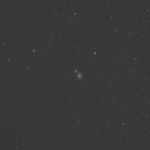





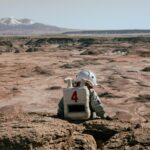
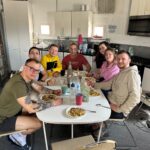

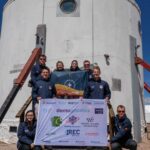

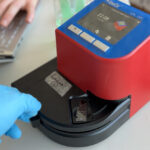



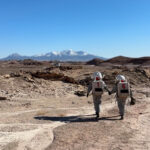

You must be logged in to post a comment.